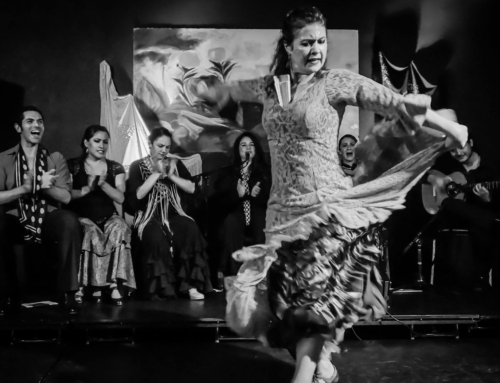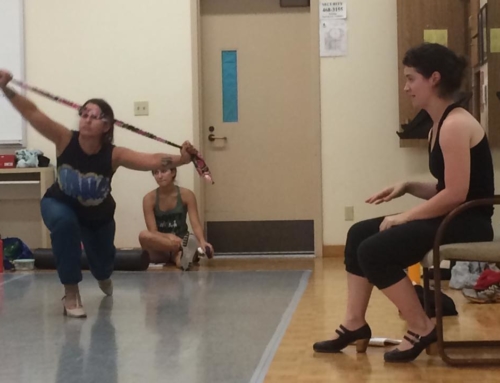The value of doing the same dance over and over and over:
People often talk smack about Soledad Barrios because she’s been dancing the same solo for 20+ years. But so did Carmen Amaya. Watch her videos – same alegrías over and over and over. Even in other musical styles, the same vueltas quebradas with an abrupt shift to vertical to end the dance, the same side to side marcajes with unabashed hip movement. Nobody ever got tired of that. Why not? Well, for one thing, she did every movement with her all – no holding back. Second, the movements went perfectly with the music. Carmen Amaya wasn’t wildly improvising, she attacked the honed movements with an unmatched ferocity.
Great solos don’t need to be reinvented every time they’re performed. Great solos are great because the performer has deepened their understanding of themselves and the solo by doing it over and over. Which isn’t to say the solo doesn’t shift – it does. But slowly, gradually over time, with a profundity to it. Real change and real growth is usually slow. So even if a dancer’s steps change every time they perform, they may not necessarily be growing and developing artistically. As Isabel Bayon once said “I think one has to stop a little in order to look for the simplicity, because within the simple is the most complicated element. But without losing the Flamenco touch or freshness…this is the difficult part. To innovate by doing things that are different is easy. To make it simple, with flavor and Flamenco form is much more complex.” (flamenco-world.com)
I think of tight-rope walker Philippe Petit and how he suggests you rehearse your routine over and over and over. Somehow, the simplicity of crossing a tight rope wire never gets old. There’s a danger always present, whether it’s between two skyscrapers or “just” 20 ft off the ground. There is also a danger present in flamenco, the possibility of getting out of compás, the not knowing how the musicians will react to a dancer and vice versa. The possibility of duende and of failure always present. And every day a dancer’s body is different – the same steps are different in any moment. I remember reading that Israel Galván once said the audience is his bull – a force to be reckoned with, performing being the bull ring where the performer must overcome fear.
I’m not saying you should stick to the same dance and never change it, but rather, why are we always in such a rush to get more steps when we haven’t squeezed all the juice out of the steps we have?
“Make even the slightest gesture important…My act lasts twelve minutes, even though my head is filled with centuries of wire walking.” – Philippe Petit





Leave A Comment